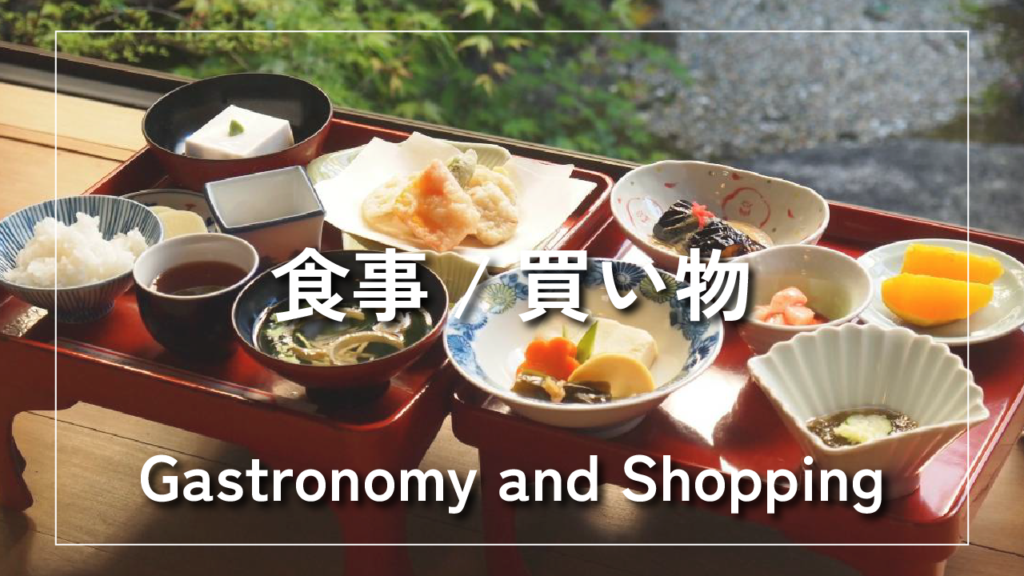
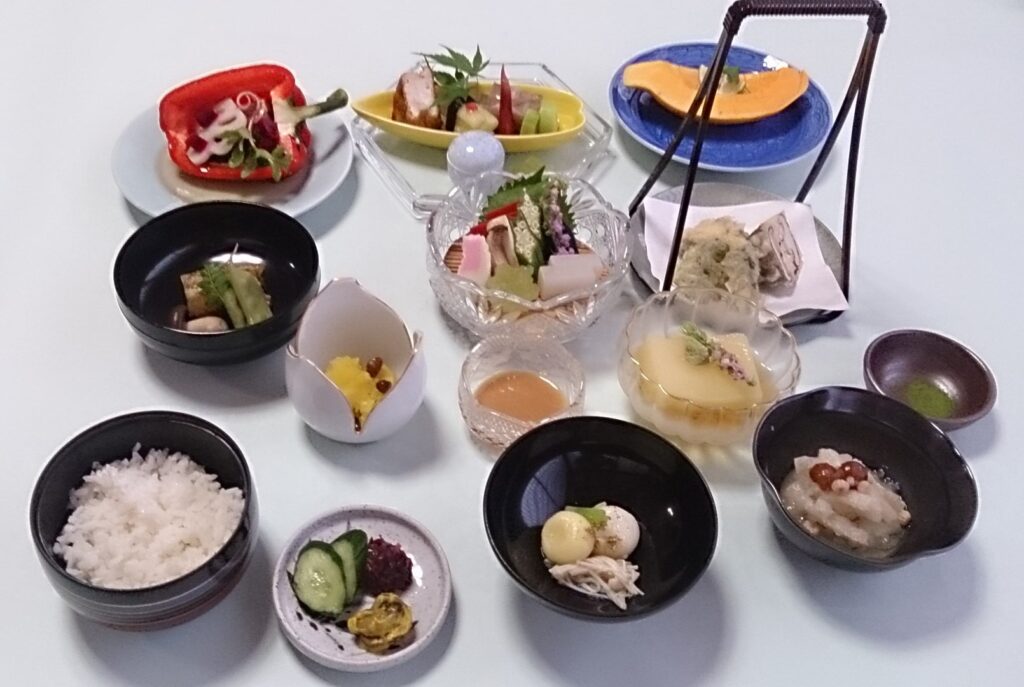
Koyasan cuisine “Hanabishi”
Located in Koyasan, a world heritage site, this restaurant serves a variety of Japanese cuisine, including very special and traditional vegetarian cuisine and kaiseki cuisine. Seasonal ingredients are served using traditional techniques by skilled chefs with great care. We continue to preserve the taste of our long-established restaurant while single-mindedly adhering to the basics of five methods, five tastes, and five colors. Among them, the “homemade sesame tofu” is a particularly recommended dish.
Vegetarian Cuisine of Shukubo in Koyasan
Shukubo is a temple that has accommodations for monks and worshipers. At the temple lodgings in Koyasan, you can not only enjoy the historic architecture and beautiful gardens, but also enjoy traditional vegetarian cuisine. The special feature of Koyasan Buddhist cuisine is that it does not use raw-smelling foods such as meat or fish, as well as strong-smelling vegetables such as green onions, rakkyo, chives, garlic, and onions.
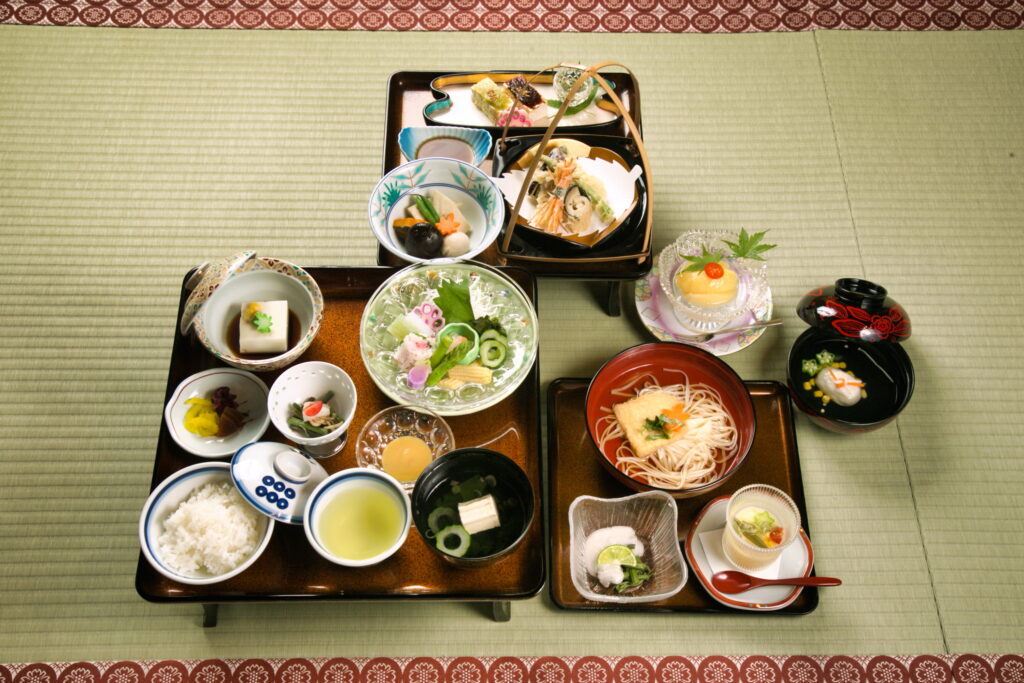
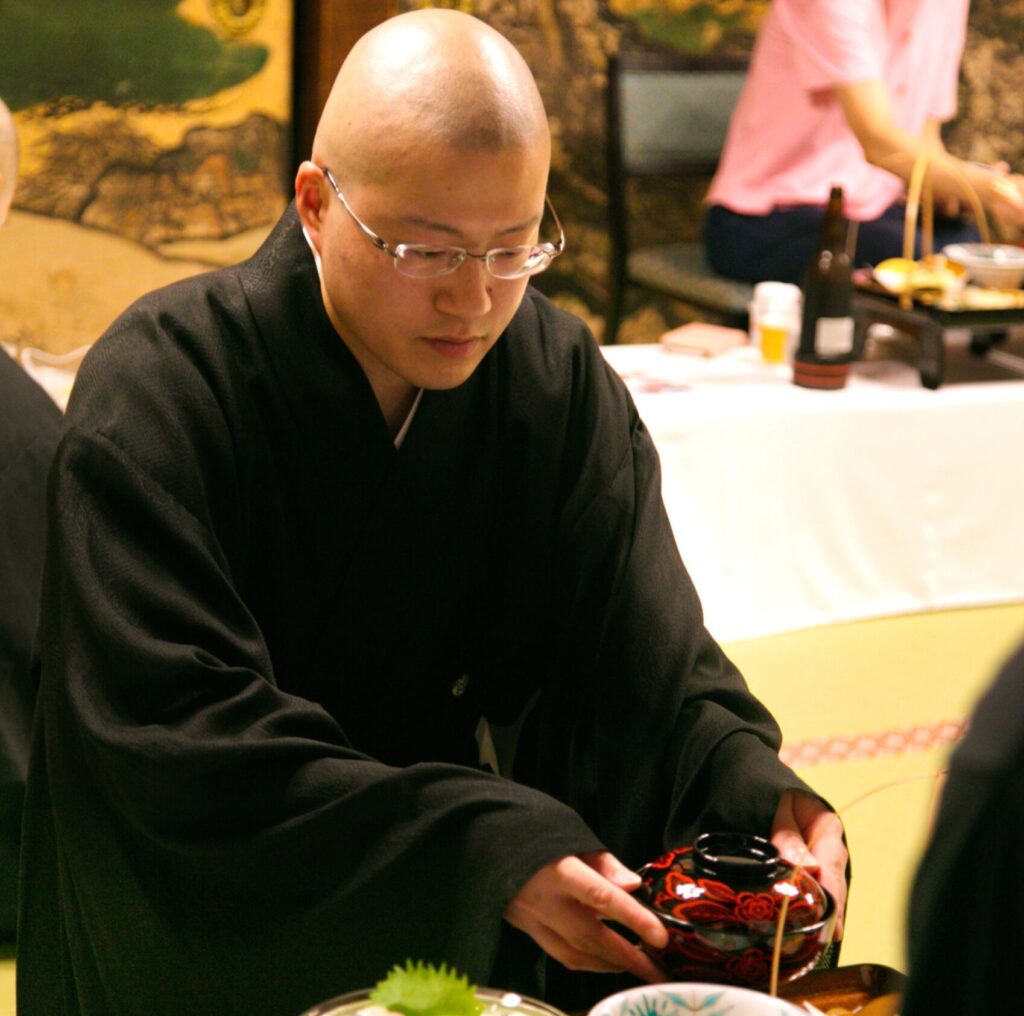
Furemaizen
Shojin ryori served at shukubo is also a kind of “hospitality cuisine.” For this reason, a variety of delicate ideas are put into consideration, including the cooking method, taste, and beauty of the presentation. If you want to enjoy such vegetarian cuisine at shukubo in Koyasan, we recommend the Furemaizen experience. Furumaizen is a ritual used by monks to entertain guests with meals, and the highlight is the beautiful gestures in which they carry the food. Why not sample Buddhist vegetarian cuisine while enjoying the hospitality unique to Koyasan?
Kadohama Goma Tofu Sohonpo
Kadohama is a long-established store that has been dedicated to making goma tofu (sesame tofu) in the sacred place of Koyasan. Goma tofu has been passed down as a valuable protein source in simple vegetarian cuisine, and has been popular as a healthy food for monks in training. In addition to purchasing goma tofu as souvenirs, you can also enjoy a variety of menu items such as Gosai, a kaiseki meal using goma tofu, and sweets.
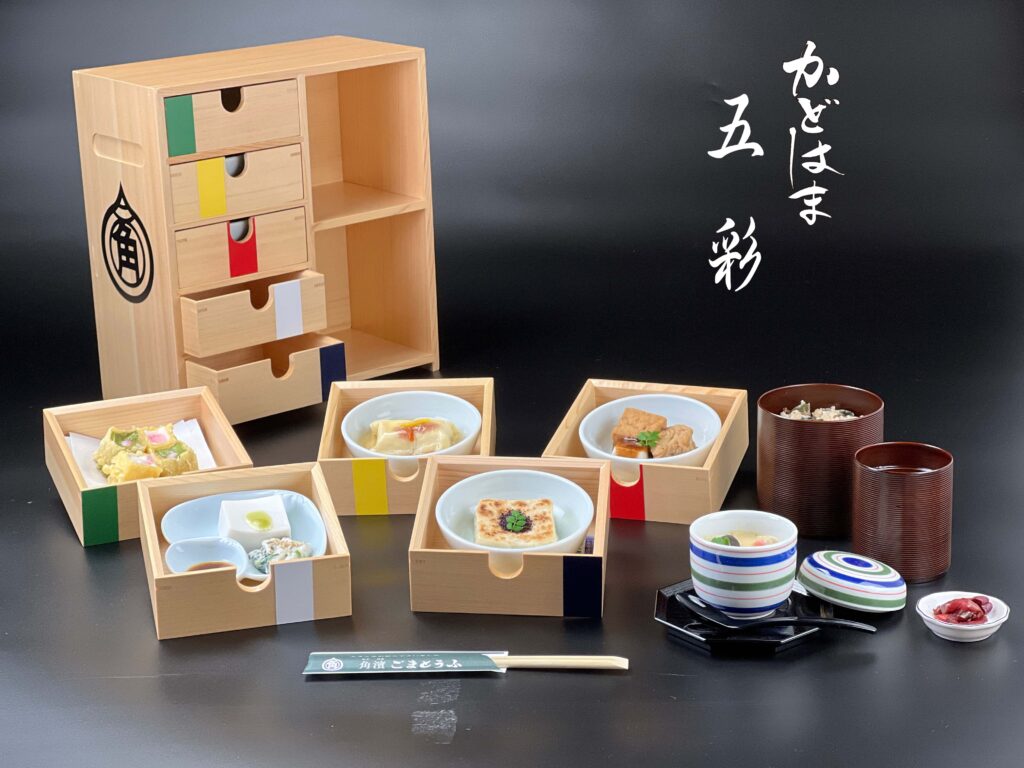
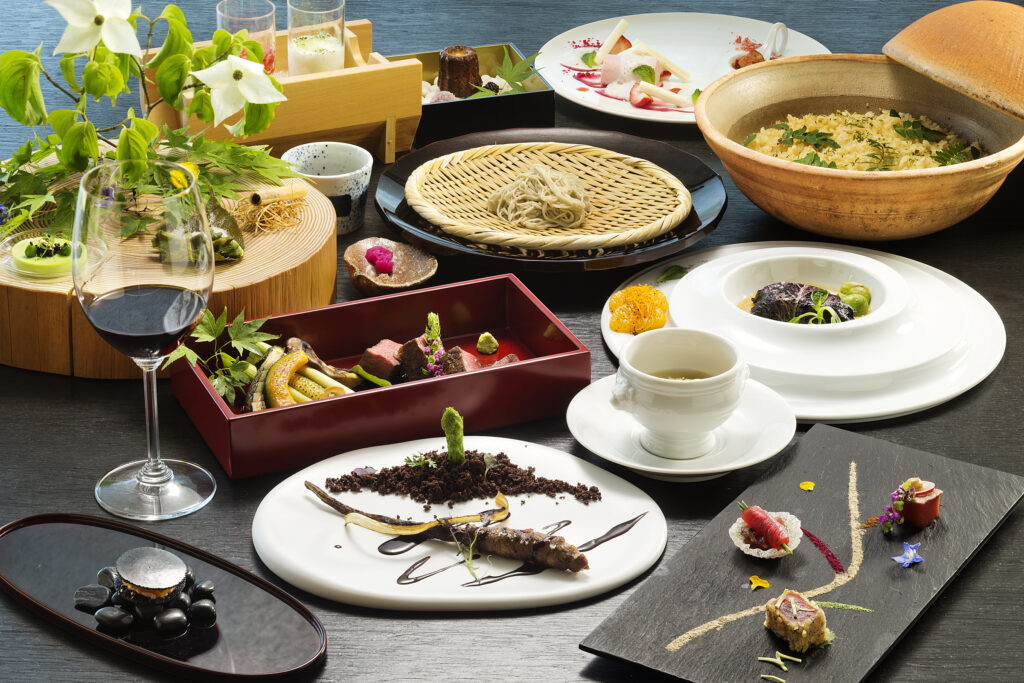
Creative Japanese French of Sanso Amanosato
Amano is a mountain village located in the southern part of Katsuragi Town at Koya-Sanroku, which is the foot of Koyasan. Amanosato, a hidden inn in this sacred village that is deeply connected to the creation of Koyasan by Kukai, is a resort hotel that is limited to eight groups per day. At this inn, where you can spend quality time in hot springs and suites, you can enjoy “Creative Japanese French” dinners that make use of ingredients from Wakayama Prefecture, such as Kumano beef and Amano rice.
Japanese Kaiseki Cuisine of Spa Yunosato
Yunosato is a natural hot spring facility at the foot of Mt. Koya that has three types of famous spring water: “Gold Water”, “Silver Water”, and “Copper Water”. The on-site restaurant uses mineral water “Tsuki no Shizuku” and sterile groundwater “Gold Water” to serve dishes that incorporate local vegetables and pesticide-free vegetables from “Yunosato Farm.” The Japanese kaiseki cuisine is prepared by a head chef specializing in Japanese cuisine, and is seasonally conscious. It uses plenty of vegetables and has a heart-warming soup stock. There is also a private banquet hall where you can have a great time with your family and close friends.
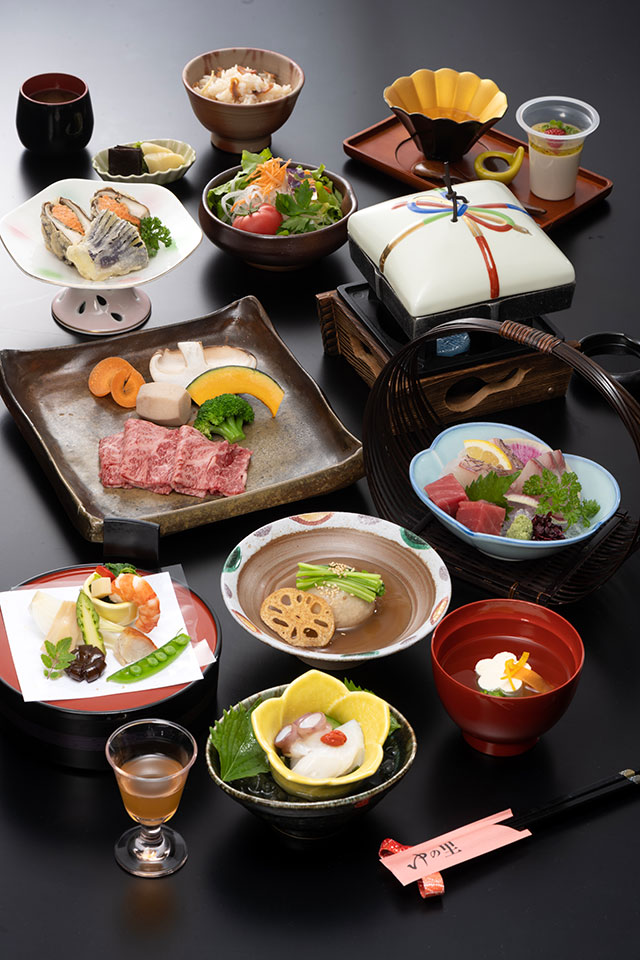
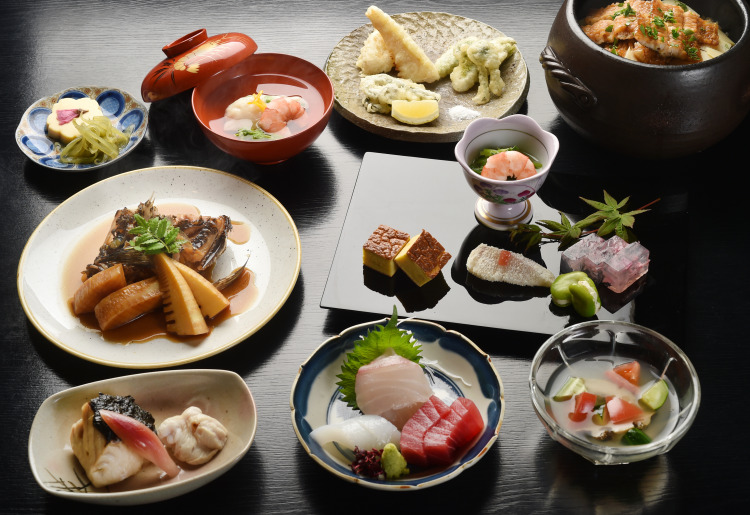
Asahiya Kappo Tomo
Asahiya Kappo Tomo is a Japanese restaurant located in Hashimoto City at Koya-Sanroku. At this restaurant, which was featured in the Michelin Guide 2022, a culinary magazine published by Michelin, you can enjoy traditional Japanese cuisine and kappo, made with the best of the season. Enjoy high-quality authentic Japanese cuisine with heartwarming hospitality run by a husband and wife team.
Confectionery shop Kanazawa Juoken
Founded in 1911. A long-established Japanese sweets shop loved by local residents in Koyaguchi Town at Koya-Sanroku. In addition to the famous kinako dango, standard dorayaki, and strawberry daifuku, the ice cream bar, which does not melt, is made with local Wakayama fruits and kudzu, and is very popular among people of all ages. We also offer a one-on-one experience in which you can learn how to make Japanese sweets from the fourth-generation owner, which has been well received by our customers.
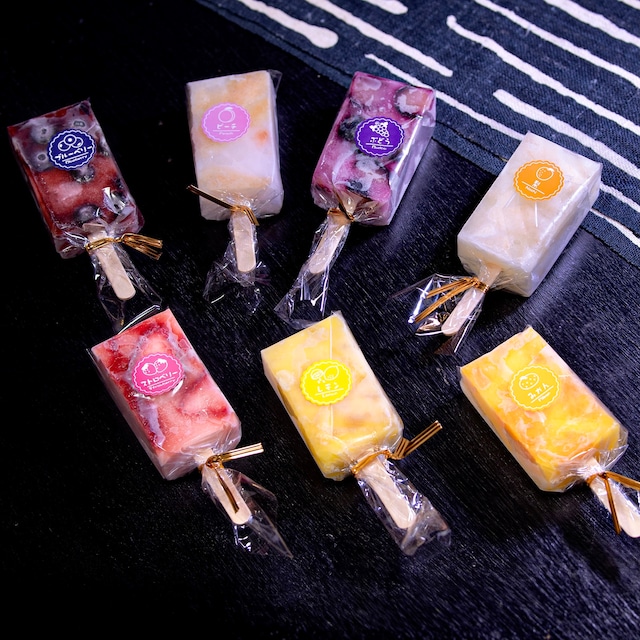

Roadside Station “Kaki no Sato Kudoyama”
This roadside station is located in Kudoyama Town of Koya-Sanroku, which is associated with the Sengoku period warlords, the Sanada family, and is also known as a famous producing area of persimmons. On the premises, there is a “World Heritage Information Center” that disseminates information about World Heritage Sites and Yukimura Sanada, a direct sales shop that sells fresh locally grown produce, and a bakery cafe that serves freshly baked creative bread and pasta. It is a roadside station full of things to see. Many people come here to rest and buy souvenirs, and it functions as one of the bases for sightseeing at Koya-Sanroku.
Farmers Market “Yatchon Hiroba”
A farmers’ market where you can enjoy local foods and meals from Koya-Sanroku. “Yatchon” means “everyone gather together” or “leave it to me,” and it conveys the idea of ”we want to be crowded with people and provide satisfaction and smiles to our customers.” Because farmers’ markets sell products directly from their fields to stores, there are no fees incurred during the distribution stage, and you can purchase high-quality agricultural products at low prices. How about some fresh vegetables from the Koya-Sanroku as a souvenir from your trip?

